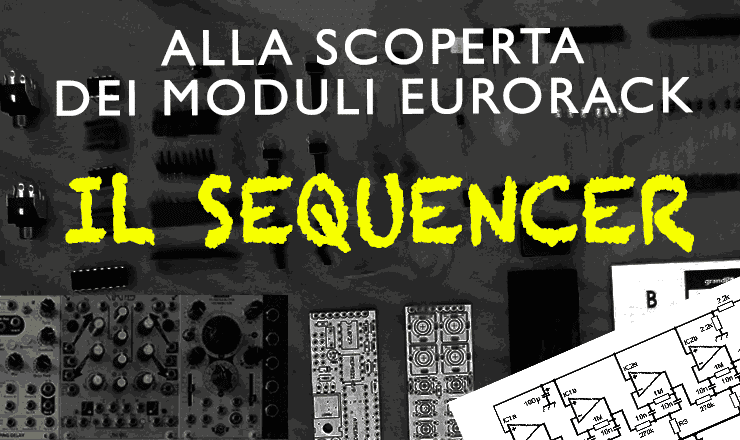Synthesis and Synthesizers
Published on 10/09/2018

It is a circuit that sends a sequence of voltages usually in a cyclic and repetitive manner by means of programmable steps. There are various types of senquencer :
Some step sequencers implement the RANDOM function where the movement of steps occurs randomly. Each sequencer has one or more gate/trigger and CV / QCV (quantized output) outputs available, also they can be provided with clock, reset and direction inputs.
The Moskwa step sequencer provides access along a circumference that promotes programming speed during execution. Each of the eight steps has a voltage control. Gate voltages can be sent independently for each step via 8 keys. Rate, Slew, and Reset adjustments are available. The eight steps can be read in Forward, Pendulum, or Random mode. Outputs allow Gate Out and CV Out to be taken. Clock In for synchronization.
Eight programmable sections through sliders, each with independent gate generation with adjustable Pulse Count , so each step can last from 1 to 8 times longer than the others. Each step, through the Pulse Count function, can extend the duration of the note,turn on or off the gate for pauses. Each step can be skipped or can enable Slide. On the left side of the panel are the controls for configuring the module.
It has 16 steps organized in four rows of four that perform different CV/Gate management functions. Steps are read by horizontal or vertical shifting, based on the clock pulses connected to the Xclock and YClock inputs. There is a touch grid that allows different functions to be selected depending on the selected menu, determining the behavior of the steps. A step can be reached directly by touching its position on the matrix, steps can be isolated for gate pulses, and the entire sequence can be managed in the programming menu. There are quantized and unquantized outputs. It is possible to manage independently on the two axes (X and Y) the Gate On and Off behavior of each step. It is possible to manage one of four quantization scales. Forward, backward, pendulum and snake modes can be advanced.
In an interview Richard Devine said he uses the René to create most of his timbres. For him it is the first "Cartesian sequencer," "geometric sequencer," "planular sequencer," "axis sequencer," and "non-linear sequential tuned voltage map." Is there anything else needed?
Join us today and get 5% off your next order!

Empty cart